Morocco Regional Development: Fes-Boulemane Regional Development Plan
Wali of Fes-Boulemane Region, Mohammed Rharrabi
Since 2003, more than 9500 businesses and more than 10,000 jobs have been created in Fes with the support of the CRIs.
Interview with Mohammed Rharrabi Wali of Fes-Boulemane Region
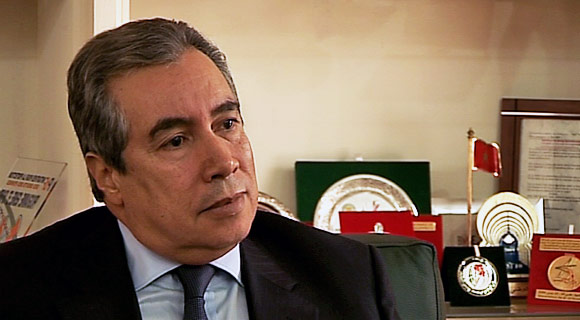
The town of Fes is an important economic hub. How has it evolved throughout its long history and what are your present plans to make it more dynamic and increase its global attractiveness?
FES was Morocco’s first capital until 1912. It was a town dedicated to education and knowledge for thousands of years. It produced Morocco’s economy, finance and political elites. After independence, Rabat became the new capital and Fes continued to play an important role in independent Morocco.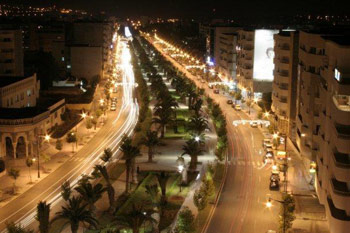
It had been the second economic centre after Casablanca until the 90s when other centres like Tangiers, Agadir, and Marrakech rapidly developed. FES has tried to recover its earlier position since then. The royal development program is based on each region’s resources. The resources of the region of Fes are based on knowledge of the economy, education and culture. It is situated near the middle Atlas, the Rif and near the most important towns of Morocco, Rabat and Casablanca. Fes also enjoys a diversified economy.
FES is a national centre for the craft industry, a rapidly growing sector with around 2500 artisans thanks to the tourism. FES also attracts a lot of tourists because of its old Medina sprawled on around 300 hectares, its natural museum, and its cultural heritage. Another important sector for the economy of Fes is its industry. Fes is an important industrial centre specialized in the textile, leather and food industry.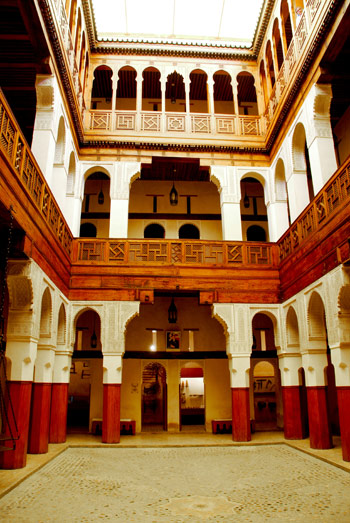
Its activity is developed compared to other towns, and therefore FES now plays a part on the global market. We are also promoting investment. We have created CRIs (Regional Centres for Investment) in 2001. They use territorial marketing and management to promote investments and have obtained good results up to now. Since 2003, more than 9500 businesses and more than 10,000 jobs have been created in Fes with the support of the CRIs.
Since 2003, more than 9500 businesses and more than 10,000 jobs have been created in Fes with the support of the CRIs.
FES has launched three programs to develop tourism, industry and crafts. Can you tell us more about these programs?
These 3 regional development plans are in check the national plans approved by the government. Emphasis is placed on the country’s real resources in each sector and, in particular, sectors in which Morocco has international competitive prospects; that is, tourism, certain industrial sectors, craftsmanship, the key agricultural sector as well as town planning and construction and public works. We were the first region to launch a development plan in the tourist sector in collaboration with the government.
This plan includes all the local players: councillors, government and professionals in the tourist domain work together to manage the profits from tourism and investment, opening up the air space to Fes. In the framework of this program, we have launched the zone Oued Fes project: 170 hectares surrounding a golf course where hotels can be constructed. We also plan to improve the Medina, our main tourist attraction and the heritage of Fes in general. We have invested 150 million dirhams in this 4-year-project. The goal is to restore its old dwellings, develop guided visits, to fix the basic needs in the Medina like lighting etc.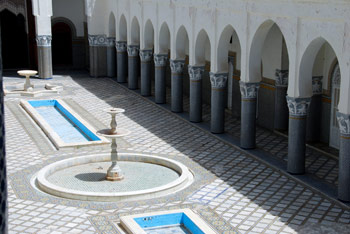
This project has completely transformed the Medina. The third part of the plan consists of improving cultural tourism in Fes in collaboration with the government. We have developed the “city break” concept, which allows tourists from neighbouring European countries to come from Thursday to Sunday and stay in the Medina to discover the authentic charm of Moroccan life. Thanks to the development of low cost flights to Fes this concept has more and more success. We are highly encouraged by the spectacular increase in the number of bookings.
The fourth part is the improvement of the institutional capacity of professionals. They are grouped within the Regional Tourism Commission, an association of professionals in the tourist domain and tourist establishments, working together and improving its image. One of the main events is the annual Sacred Music Festival of Fes which attracts around 1000 tourists who come specifically for the festival and stay at least 8 days on average.
As for the industrial sector, the regional plan for industrial development aims at encouraging the new off-shoring sector. We are working with the government to install 22 hectares dedicated to the offshore sector in the Fes region. The government has authorised MedZed Sourcing, a subsidiary of the “Caisse de Dépôt et de Gestion”, to control the project. The second part of the plan is the modernisation of industrial zones and the creation of new ones. We are currently establishing an ambitious project for the region with TMSA “Special Tangier-Mediterranean Agency” (Agence Spéciale Tanger-Méditerranéenne), the creation of a new industrial platform around the large port of Tanger-Med. 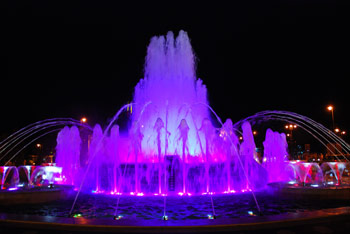
The regions of Tangiers, Kenitra and Fes-Meknes are destined to become a new investment platform which will lead to export growth. Regarding the craft profession, the regional development plan aims to modernise small and middle size businesses in the domain. The professionals in this sector already produce a wide range of decorative objects. We are working on certain problem areas of this sector, in particular copperware and pottery. We have created two zones reserved for these two sectors and we are adjusting them according to sustainable development standards. As the clients are becoming more interested in this particular aspect, another of our goals is to improve international traceability of our products. Morocco has adopted a global plan “the green project” in the agricultural domain.
It is adapted to each region of the country according to its specific resources, notably; arboriculture, livestock leasing, cereal growing etc. Its application started in the region of Fes; all the mentioned plans are global yet adapted to local specificities. The state fixes objectives; the local authorities collaborate to adopt the new policies with the region’s potential.
Like Wali, a local leader, what are your own plans and goals for the region of Fes? What are your challenges? Does the government take decisions concerning your region without consulting with you?
Someone should create the synergy between the local councillors and coordinate their efforts. It is important that I rigorously follow the progress being made; I also want to be able to intervene anytime a situation demands it; for example, if the need to negotiate with certain players arises. The role of Wali is to coordinate the work of all the players for better efficiency. No project can succeed without first consulting with the local players and we have never been confronted with this problem yet. 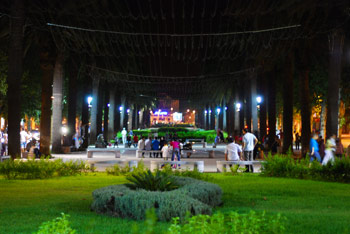
Are you in contact with international players as well?
Naturally, the Regional Centre for Investment is there to receive them and offers all the necessary information about Fes (on the Internet). If the international players need any help, Wali is there to introduce them to the national and regional players. The King’s vision and the Wali’s main goal is to encourage the development of the country by creating wealth and exploiting the country’s potential. As soon as an occasion turns up we support it.
The director of the Fes-Boulemane Regional Centre for Investment said he had allowed the creation of 582 new businesses. How is the investment evolving in the region and how do you think the region can increase its attractiveness for the foreign investment? 
The northern region of Tangiers has an enormous potential. Its economic free zone, large port, marina (in construction) and its proximity to Europe all make it to be extremely attractive.
The other regions like Rabat, Casablanca, and Marrakech offer similar potential. We are currently at the time of competiveness among the regions, and local councillors are responsible for providing their regions with unique opportunities in order to attract investment. Fes is unique for its quality of life, education, qualified workforce, proximity to Morocco’s main towns and easy accessibility to Europe thanks to its airport.
We do not enjoy direct access to the sea but we are improving the railway network that connects Fes to Casablanca, and also the exportation platform which will attract investors. And, naturally, there is tourism – our principal resource – in which investors can be interested. Cultural tourism already mentioned; there is also country tourism that can be developed. 5 hotels are currently built in Fes. We aim to reach 15,000 beds. Marrakech has reached 60,000 beds; but we also have pressure to respect sustainable development as our Medina is old and fragile.
The minister for tourism wishes to develop tourism in other regions other than Marrakech and Agadir as exposed in the new vision “2020“ plan. We are projecting an image of openness and tolerance to succeed in today’s uncertain world. Every year, we organise identification events around this theme. The Sacred Music Festival brings artists from different religions and cultures and is also a place for debates. The “2020“ vision provides Fes with the resources to boost its cultural potential. The opening up of the Fes region’s air space allows for a better connection with Europe. We have an access to more than 130 destinations each week. Ryanair is now a partner with Fes. This did not exist 5 years ago. 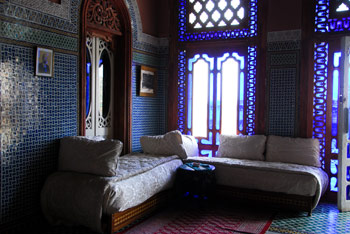
What would you say on the relationships of Fes with Europe and the Middle East; how are they evolving?
Firstly, we have a lot of Europeans living and working in Fes or diplomats who like living here for the quality of life. Secondly, Fes attracts many Europeans due to its cultural heritage. We also benefit from the presence of European investors, for example, Webhelp, which has invested in Fes and created around 1000 jobs. Moreover, Fes is generally well-known and represents Morocco in certain respects. Naturally, it shares the same challenges facing other Moroccan towns and even European towns such as the feeling of insecurity.
We are treating this problem in collaboration with security forces but also by communicating with the population particularly in the rougher zones on the edges of the town. The INDH (National Initiative for Human Development) worked with us in these zones in terms of basic installations to fight against poverty, social equipment like a gymnasium and youth centre, and voluntary associations. We have completed more than 590 projects in five years in Fes thanks to the INDH which have revitalized social cohesion. A budget of 542 million dirhams was assigned to these projects, with 55% coming from INDH funds.
What is your vision for Fes in five years, your dreams for the future?
My dream, and that of His Majesty, is that Fes becomes an influential cultural hub encouraging values like Moroccan Islam, coexistence and tolerance. We also hope that the economic sectors will develop and create thousands of jobs for the town’s youth. I would like Fes to improve its urban management in terms of sustainable development, public transport, quality of life and preservation of the medina.
I hope Fes becomes an integral part of the national evolution of our country. We have thought of linking Fes to Meknes for a long time, just like Tangiers has done with Tetouan, Rabat and Casablanca, Marrakech and Agadir. This would spectacularly increase the development and potential of the towns. It is crucial for any town, who whishes to develop, to think in advance and plan for the future. I think that economic growth will completely change Fes in five years time.